On the Development of Stative Biactancial Constructions in Spanish
Keywords:
argument structure, stativity, impersonal constructions, constructions, Old SpanishAbstract
Similarly to other Romance languages and even some Germanic languages, medieval Spanish developed a type of specialized biactancial construction containing an indirect object (or dative) which was chiefly used with stative verbs expressing experience, modality, convenience and other related semantic areas. These constructions are rooted in Latin impersonal structures, which survived into the Middle Ages. Their syntactic structure is similar to that of transitive constructions, with the distribution of their arguments reversed. Therefore, it seems reasonable to consider them ergative constructions which are directly opposed to transitive structures.
This new stative construction acquired remarkable productivity in Spanish in comparison with previous impersonal structures in Latin or medieval Spanish, and attracted a considerable amount of verbs largely varying in origin and meaning, many of which alternated their stative use by occurring in other different constructions. On account of the recent conception of construction as the association of syntactic structure with an abstract meaning, I provide several arguments in favor of considering stativity as an abstract meaning typically associated with biactantial constructions.
Downloads
References
Bassols de Climent, Mariano (1983): Sintaxis latina, 2 vols., Madrid: CSIC, 7ª reimpresión.
Bauer, Brigitte (2000): Archaic Syntax in Indo-European: The Spread of Transitivity in Latin and French, Berlin: Mouton de Gruyter.
Campos, Héctor (1999): "Transitividad e intransitividad”, en Ignacio Bosque y Violeta Demonte, eds., Gramática descriptiva de la lengua española, Madrid: Espasa-Calpe, vol. II, pp. 1519-1573.
Cano Aguilar, Rafael (1984): “Cambios de construcción verbal en español clásico”, Boletín de la Real Academia Española, 64, p p . 203-255.
Corominas, Joan y José A. Pascual (1984): Diccionario Crítico Etimológico Castellano e Hispánico, Madrid: Gredos.
Croft, William y D. Alan Cruse (2004): Cognitive linguistics, Cambridge: Camb. University Press.
Cuervo, Rufino J. (1954 [1893]): Diccionario de Construcción y Régimen de la Lengua Castellana, Bogotá: Instituto Caro y Cuervo, 9ª ed.
Delbecque, Nicole y Béatrice Lamiroy (1996): “Towards a typology of the Spanish dative”, en van Belle y van Langendock, eds., The Dative, vol. I, Descriptive Studies, Amsterdam: Benjamins, pp. 73-117.
Ernout, Alfred y François Thomas (1953): Syntaxe Latine, Paris: Klincksieck, 7ª reimp., 1989.
Eythorsson, Thórhallur y Johánna Barepal (2005): “Oblique Subjects: A Common Germanie Inheritance”, Language, 81/4, pp. 824-81. http://dx.doi.org/10.1353/lan.2005.0173
Fernández Ramírez, Salvador (1986 [1951]): Gramática española: el verbo y la oración, Madrid: Arco Libros.
Fillmore, Charles J., Paul Kay y Catherine O’Connor (1988): “Regularity and idiomaticity in grammatical constructions: The case of let alone", Language, 64/3, pp. 501-538. https://doi.org/10.2307/414531
Fischer, O. y F. C. van der Leek (1983): ‘The Demise of the Old English Impersonal Construction”, Journal of Linguistics, 19, pp. 337-368. https://doi.org/10.1017/S0022226700007775
Goldberg, Adele E. (1995): Constructions: A Construction Grammar Approach to Argument Structure, Chicago: University of Chicago Press.
Goldberg, Adele E. (1999): “The emergence of the semantics of argument structure constructions”, en Brian MacWhinney, ed., The Emergence of Language, Londres: Erlbaum, pp. 197-212.
Goldberg, Adele E. (2003): “Constructions: a new theoretical approach to language”, Trends in Cognitive Science, 7/5, pp. 219-224. https://doi.org/10.1016/S1364-6613(03)00080-9
Gutiérrez Ordóñez, Salvador (1999): “Los dativos”, en Ignacio Bosque y Violeta Demonte, eds., Gramática descriptiva de la lengua española, Madrid: Espasa-Calpe, vol. II, pp. 1856-1930.
Hopper, Paul J . y Sandra A. Thompson (1980): ‘Transitivity in gramar and discourse”, Language, 56/2, pp. 251-299. https://doi.org/10.2307/413757
Kuryowicz, Jerzy (1964): The inflectional categories of indo-european, Heidelberg: Carl Winter.
Melis, Ludo (1998): “From form to interpretation: Building up the ‘dative’ roles”, en van Langendock y van Belle, eds., The Dative, vol. II, Theoretical and Descriptive Studies, Amsterdam: Benjamins, pp. 261-291.
Pinkster, Harm (1988): “Non-accusative second argument of two-place verbs in Latin”, Cuadernos de Filología Clásica, XXI, pp. 235-245.
Rivas, Elena y Mª José Rodríguez Espiñeira (1997): La cláusula en castellano medieval: constituyentes funcionales, Santiago de Compostela: Universidad (col. Laia, Series Maior, 5).
Tomasello, Michael (2003): Constructing a Language. A Usage-Based Theory of Language Acquisition, Cambridge, Mass.: Harvard University Press.
Touratier, Christian (1994): Syntaxe Latine, Louvaine la Neuve: Peeters.
Vázquez Rozas, Victoria (1995): El complemento indirecto, Santiago de Compostela: Servicio de Publicaciones de la Universidad.
Van Hoecke, Willy (1998): “The Latin dative”, en Willy van Langendock y William Van Belle, eds., The Dative, vol. II, Theoretical and Contrastive Studies, Amsterdam: John Benjamins, pp. 3-37.
Velten, H. V. (1931): “On the origin of the categories of voice and aspect”, Language, 7/4, pp. 229-241. https://doi.org/10.2307/409225
Wunderlich, Dieter y Renate Lakämper (2001): “On the interaction of structural and semantic case”, Lingua, 111, pp. 277-418. https://doi.org/10.1016/S0024-3841(00)00040-1
Wunderlich, Dieter (2005): “Toward a typology of verb classes”, disponible en http://user.phil-fak.uni-duesseldorf.de/~wdl/structyp-verb.pdf

















